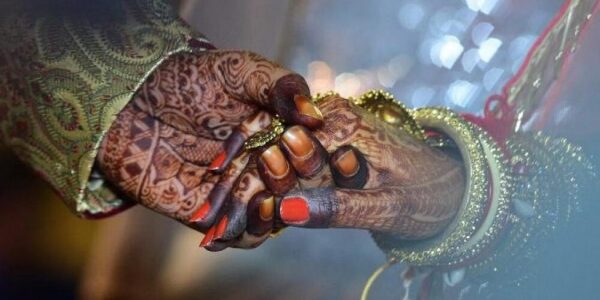Raising Legal Age For Marriage
Child marriage is a marriage or domestic partnership, formal or informal, between a child and an adult, or between a child and another child. It is estimated that there are around 24 million child brides in India. The states with the highest rates of child marriage include Bihar, Rajasthan, Jharkhand, Uttar Pradesh, West Bengal, Madhya Pradesh, Andhra Pradesh, and Karnataka (50 per cent or more).


The reasons for child marriages in India are Patriarchal ideals, Regressive customs and religious norms, Marriage’s rising cost, Poverty, Caste disparities, Lack of education, Fake certificates of age.
The consequences of child marriage were poor health indicators, which raises maternal mortality and morbidity rates. Children born to relatively young moms have significant mortality rates. Health issues are likely to arise in the youngsters that survive. Additionally, young girls who are married as children run the danger of getting HIV and other STDs. Domestic violence and abuse can cause post-traumatic stress disorder and depression, which have an impact on mental health. Women’s work options, financial security, and capacity to contribute to society are all limited by child marriage, which is also closely linked to lower educational attainment among girls. Young, illiterate mothers are also less likely to have children who will pursue higher education, which feeds the cycle of poor literacy and scarce job possibilities. Young married women frequently lack status and influence inside their marriages and households, which increases their risk of experiencing domestic abuse, sexual abuse, and social isolation. Fertility rates are directly impacted by lower marriage age. The reproductive rate increases as the age of marriage decreases. Child marriage breaches the rights of children, including their right to an education, their right to be safe from physical and emotional harm, their right to leisure time, and their right to be with their parents.
* Click to Follow Voice of Ladakh on WhatsApp *
Various measures were taken during the different time periods. During the colonial era Indian Penal Code, which was passed in 1860, made having sex with a girl who is younger than 10 illegal. The Age of Consent Bill, of 1927, which stated that marriage with a girl under the age of 12 would be invalid, revised the rape rule in 1927.The Child Marriage Restraint Act of 1929 established 16 as the minimum age for girls’ marriage and 18 as the minimum age for males’ marriage. Because it was sponsored by the judge and Arya Samaj member Harbilas Sarda, the statute is also known as the Sarda Act. The Hindu Marriage Act, 1955, Indian Christian Marriage Act,1872) and Special Marriage Act, 1954 prescribed minimum age as 18years for bride and 21 years for groom. Prohibition of Child Marriage Act, 2006 prohibits marriage below 18 for women and 21 years for men.
India has implemented several government schemes to support the welfare and education of girl children viz Beti Bachao Beti Padhao (BBBP),Sukanya Samriddhi Yojana (SSY), Kasturba Gandhi Balika Vidyalaya (KGBV, Balika Samriddhi Yojana, National Scheme of Incentive to Girls for Secondary Education (NSIGSE).
India has made remarkable progress towards ending child marriage. The prevalence of the practice has declined steeply over the last two decades – from 49 per cent in 2001 to 23 per cent in 2021. This progress is associated with improvements in female education, a reduction in poverty and fertility, the promotion of positive gender norms, and the strengthened capacity of social service, justice and enforcement systems, among other factors. Despite advancements on many fronts, the rate of decline in child marriage in India is not sufficient to reach the target of eliminating the practice by 2030, as set out in the Sustainable Development Goals.

A committee headed by Jaya Jaitley was established by the Union Ministry for Women and Child Development in 2020 to look at issues such the average age of motherhood, the necessity of reducing the Maternal Mortality Ratio, and the enhancement of women’s nutritional status. The Committee suggested raising the minimum age of marriage for girls to 21 and implementing the change gradually.
The rationale for Raising the Marriage Age includes Gender Equality, Health and Well-being, Educational Opportunities, Economic Participation. These changes aim to create a more equitable society where women have the same opportunities as men to pursue their education, careers, and personal development. Government introduced Prohibition of Child Marriage (Amendment) Bill, 2021 in the parliament to amend the 2006 Act to raise the legal age of marriage for women from 18 to 21 years, aligning it with the age for men. The bill lapsed as the 17th Lok Sabha was dissolved in May 2024.The Prohibition of Child Marriage (Himachal Pradesh Amendment) Bill, 2024 was recently passed by the Himachal Pradesh legislative assembly. This amendment raises the minimum age for marriage for women from 18 to 21 years.
Raising the legal age of marriage for women in India to 21 is a step towards promoting gender equality and improving the socio-economic status of women. However, this change must be supported by comprehensive measures to ensure effective implementation and to address the underlying socio-cultural challenges.



0 Comments